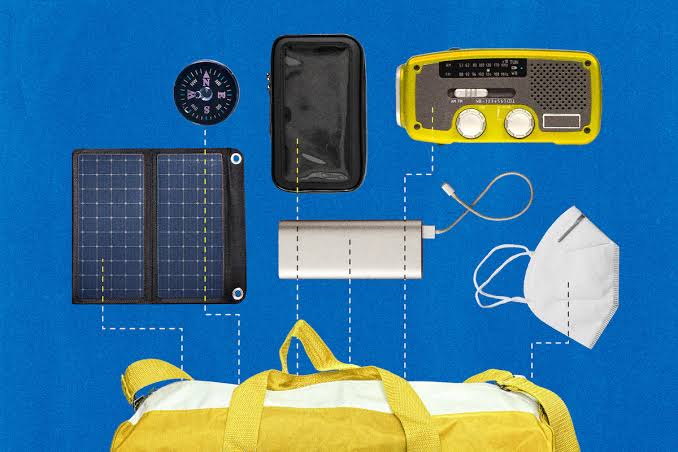In today’s digital era, gadgets have become a core part of everyday life, from smartphones and laptops to wearables and smart home devices. While these innovations have brought immense convenience and connectivity, they also raise pressing concerns about their environmental impact. As of July 2025, global attention is increasingly focused on how consumer electronics contribute to e-waste, resource depletion, and carbon emissions—and what can be done to reduce their ecological footprint.
Understanding the link between technology and sustainability is more important than ever. Consumers, manufacturers, and policymakers are now reassessing how gadgets are produced, used, and disposed of to create a more eco-conscious digital ecosystem.
Resource Extraction and Manufacturing Impacts
The lifecycle of most gadgets begins with the extraction of raw materials like lithium, cobalt, and rare earth metals. These materials are essential for batteries, processors, and displays, but mining them often involves intensive energy use, deforestation, water pollution, and even exploitative labor conditions in some regions.
Manufacturing is also energy-intensive. The processes required to assemble gadgets generate substantial greenhouse gas emissions. For example, the carbon footprint of a single smartphone can reach up to 80 kilograms of CO₂ equivalent by the time it reaches a consumer—most of it from the production stage.
Key issues with raw materials and manufacturing:
- Depletion of non-renewable resources
- Environmental degradation from mining activities
- High carbon footprint from factory emissions
- Water-intensive cooling systems used in chip fabrication
E-Waste and the Growing Disposal Problem
Electronic waste, or e-waste, is one of the fastest-growing waste streams globally. As devices become obsolete faster due to software updates, changing trends, and built-in obsolescence, millions of gadgets are discarded each year. According to recent data, over 60 million metric tons of e-waste are expected to be generated globally in 2025.
Many discarded gadgets end up in landfills or are shipped to developing countries where recycling practices are informal, hazardous, and environmentally damaging. Improper disposal leads to:
- Toxic leaching of heavy metals into soil and water
- Air pollution from burning plastics and circuit boards
- Health risks for informal e-waste workers
- Loss of valuable, reusable materials like gold, copper, and aluminum
The Role of Tech Companies in Eco-Friendliness
To counter these issues, many tech companies are taking steps to improve the sustainability of their products. This includes redesigning devices for longer lifespans, using recycled materials, offering repair programs, and reducing packaging waste.
Leading brands in 2025 now emphasize:
- Modular design – Allowing consumers to upgrade parts rather than replace whole devices
- Recyclable materials – Including aluminum frames, bioplastics, and recycled rare earths
- Carbon-neutral goals – Manufacturing with renewable energy and reducing emissions across supply chains
- Take-back and recycling programs – Helping users return old gadgets safely for reuse or dismantling
Smart Gadgets Promoting Eco-Friendly Living
Interestingly, while gadgets contribute to environmental problems, some are also designed to support eco-friendly lifestyles. Smart home technologies can optimize energy and water use, reduce waste, and help users track and lower their carbon footprint.
Examples of gadgets that support sustainability:
- Smart thermostats (e.g., Google Nest): Reduce energy consumption by learning usage patterns
- Energy-monitoring plugs: Track appliance usage and encourage efficient behavior
- Water-saving smart irrigation systems: Conserve water in residential landscaping
- Wearables: Promote sustainable habits by encouraging walking, cycling, and reducing reliance on fuel-based transport
Sustainable Consumer Choices
Individual consumers also play a critical role in reducing the environmental impact of gadgets. Through conscious purchasing and responsible usage, users can support sustainability goals and encourage manufacturers to do better.
Ways to make more sustainable tech choices:
- Buy only when necessary – Avoid impulse upgrades for minor changes
- Choose durable and repairable devices – Look for brands that offer spare parts and repair guides
- Use longer and recycle properly – Maximize device lifespan and use certified e-waste facilities
- Purchase certified eco-friendly products – Look for Energy Star, EPEAT, or equivalent sustainability labels
- Opt for secondhand or refurbished tech – Reduces demand for new resource extraction
Government Regulations and Global Efforts
Governments and international bodies are stepping up efforts to address the tech sector’s environmental impact. From extended producer responsibility (EPR) laws to eco-labeling standards, the focus is shifting toward regulation and accountability.
Some notable global developments in 2025 include:
- EU Right to Repair laws: Now expanded to smartphones, laptops, and tablets
- Canada’s e-waste regulation updates: Require tech companies to finance take-back and recycling systems
- Global Circular Electronics Partnership (CEP): Bringing together corporations and governments to support circular design and recovery systems
These initiatives signal that sustainability in technology is no longer optional—it is now a responsibility shared across the supply chain.
The Future of Sustainable Tech
Looking ahead, emerging trends suggest a shift toward greener gadget innovation. New developments in biodegradable electronics, solar-powered wearables, and AI-assisted waste tracking show promise for reducing the environmental impact of future gadgets.
There’s also growing research into reducing dependence on rare minerals by developing alternative materials or using nanotechnology. Companies are also exploring subscription and leasing models that emphasize access over ownership, reducing the number of discarded gadgets over time.
Conclusion
While gadgets undeniably contribute to environmental strain, they also hold the potential to support sustainability when designed, used, and disposed of responsibly. From smarter manufacturing and circular design to eco-conscious consumer habits and stricter regulations, the momentum toward a greener tech world is gaining pace in 2025.
As individuals, adopting mindful practices like reusing, recycling, and supporting eco-friendly brands can significantly reduce the ecological impact of our digital lives. And as companies innovate and governments legislate, the vision of a tech-enabled yet environmentally sustainable future becomes more achievable with every thoughtful choice we make.




Good